Gone are the times when distant, unattainable model photos were the only sales driver. Today, authenticity sets the pace, allowing consumers to relate to brands on a deeper, emotional level. Instead of staged, overly polished images, we see increasingly down-to-earth product photos featuring real customers being unapologetically themselves.
According to AdWeek and InMobi, Gen Z already prefers user-generated content to most conventional content types. This format becomes especially potent as the lines between niche influencer marketing and UGC get increasingly blurred.
If you want to harness the power of authentic visuals in order to drive engagement and sales, keep on reading. We’ll provide you with hands-on instruction on how to do so, breaking down diverse organic content formats and learning from some stellar UGC photo and video examples from well-known brands.
What are UGC photos?
Thanks to the rise of visual-first social media platforms like Instagram, TikTok, and Pinterest, consumers are now able to share their unfiltered impressions of a particular brand within seconds. This phenomenon is known as UGC.
UGC (user-generated content) photos and videos are visuals created by real customers rather than handpicked models or brand-hired photographers. These images and videos typically showcase products in real-life settings, providing a more relatable, unpretentious perspective.
This is the question of authenticity vs. curation. Organic visuals capture raw, genuine experiences with a product and lack heavy editing while model product photos are often too perfect to feel real.
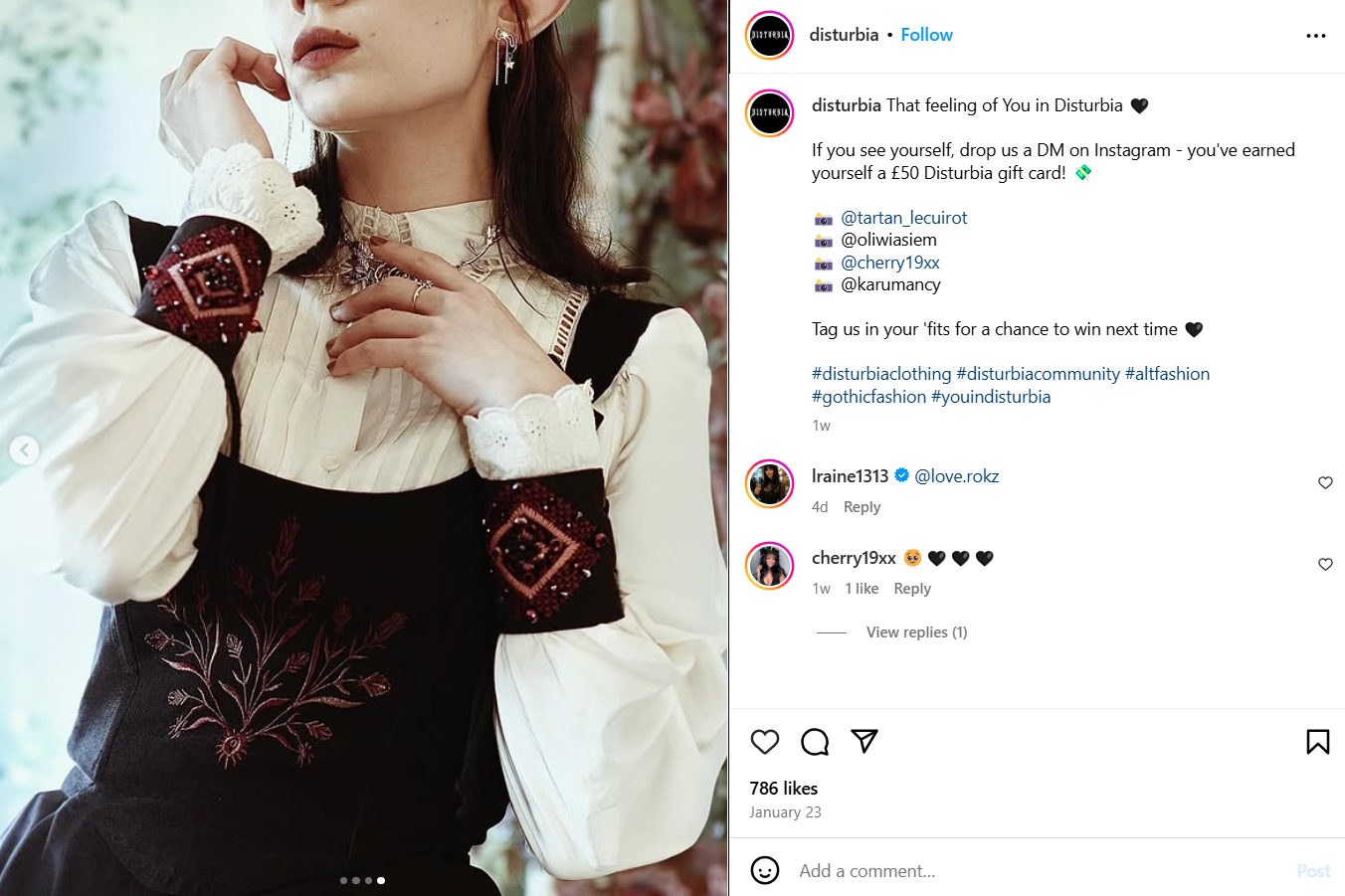 A UGC use example from Disturbia
A UGC use example from Disturbia
Consumer-generated content does a phenomenal job at helping consumers visualize how a product will actually fit into their daily lives. In turn, professional photos tend to present an idealized version of the product that is bound to clash with reality. They miss that emotional depth of a lived experience that UGC images offer.
Generally speaking, UGC combines creativity and authenticity and gives users enough room for self-expression, which makes it one of the most engaging types of on-brand content. It makes brands more approachable and erases the boundaries between promotion and community building.
Why should you include UGC images in your strategy?
User-generated content is a powerful tool for digital marketing, helping brands connect with audiences in a more human way. It unlocks new dimensions of customer trust and allows you to organically drive conversions while also keeping your followers entertained.
Over 80% of eCommerce marketers surveyed by Nosto admit it’s easier to scale marketing campaigns using the vast pool of high-quality UGC visuals. They’re also convinced such images feel refreshing and better resonate with customers.
Here’s an overview of what UGC images help achieve:
- Endless pipeline of fresh on-brand imagery. For companies, UGC equals effortless content creation, as long as the original authors are properly credited and rewarded. UGC photos aregenuine by default and, thanks to the abundance of top-tier smartphone cameras, often has publish-worthy quality to begin with.
- Increased trust and brand credibility. People trust their peers more than they trust brands, and UGC images provide that much needed social proof, showcasing real people using and enjoying your product. This reduces skepticism and caution among potential buyers.
- Sparks of organic engagement. User-generated visuals encourage more interaction on social media because people are more likely to like, comment, and share content that feels relatable.
- More spontaneous conversions. Seeing real customers use a product in everyday situations reassures potential buyers, boosting in-the-moment purchases. It also helps build more realistic expectations from the product, leading to higher customer satisfaction.
- Stronger community. Featuring UGC images fosters a sense of togetherness and belonging. When people see their photos shared by their favorite brands, they feel more connected, leading to stronger brand loyalty and advocacy.
- Cost-effective marketing. Relying on customer-submitted content is significantly cheaper than putting out professional photoshoots at scale. This way, you get to cut production costs while maintaining a steady stream of fresh, high-quality content. At the same time, UGC beats AI-generated images in terms of customer trust.
- Improved campaign performance. UGC-based ads tend to perform better than traditional ads. Including such images in social media campaigns, product pages, and email marketing can help you achieve higher audience engagement rates and ROI.
While consumer-generated content isn’t a reliable substitute for professional images, it’s definitely a strong addition to them, as it allows you to craft a more nuanced presentation of your business online.
How to incorporate UGC photos and videos in your messaging
Trustworthy as it may be, UGC still has to deliver value, just like any other type of marketing content. It’s not enough to just capture a random customer standing next to your product — using such imagery should be justified and serve a bigger goal. Read on to learn how to strategically integrate community-driven content across various formats and channels.
Social media posts and Stories
This might be the easiest way for brands to include UGC photos in their communications without having to rework their whole strategy. By sharing customer images and videos on Instagram, TikTok, Facebook, or Twitter, you acknowledge their opinions and put them in a well-deserved spotlight.
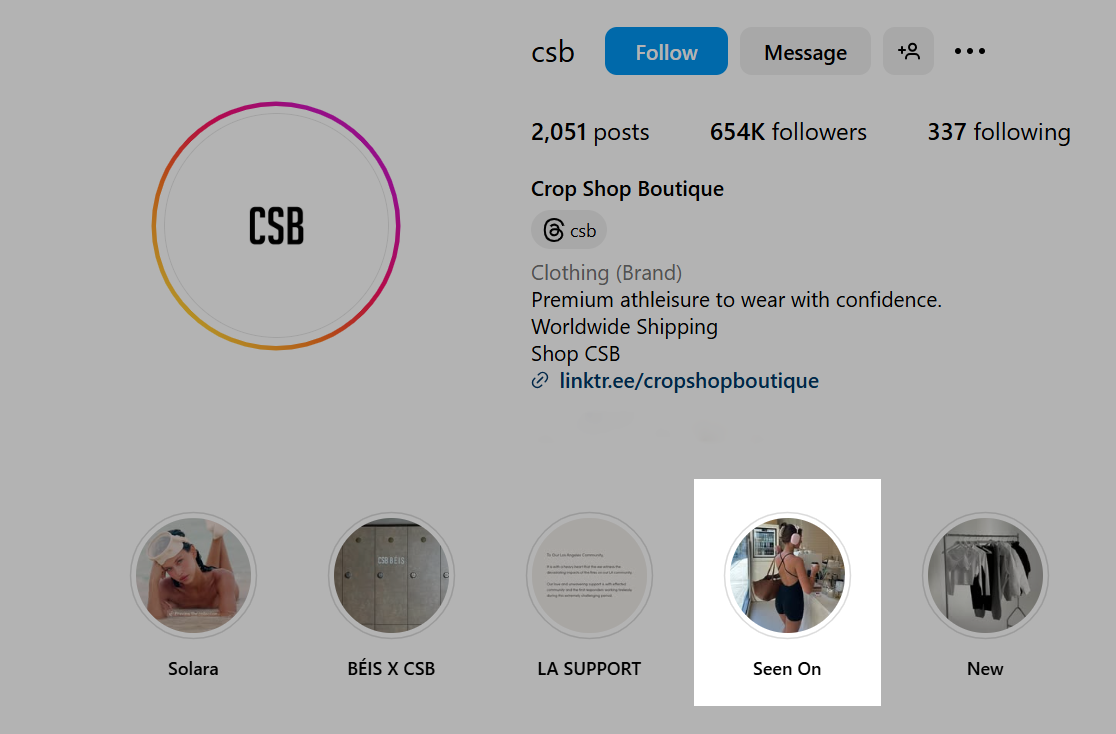 An example of highlighting UGC on a commercial Instagram page
An example of highlighting UGC on a commercial Instagram page
When reposting UGC photos, you can add interactive features like polls, stickers, and Q&As to spark user activity and boost social-media driven sales. Another good practice is to publish UGC in Instagram Stories and save them in a “Customer Love,” “As Seen On You,” “Our Community,” or “Your Feedback” highlight to prevent them from disappearing in your feed.
To react to brand mentions, customer messages, and comments in a timely manner, you can implement an Instagram chatbot powered by SendPulse. These bots are easy to create without any coding knowledge, and they can interact with users in a fully automated yet personalized way. Moreover, you can supercharge them with AI for smooth, human-like interactions around the clock.
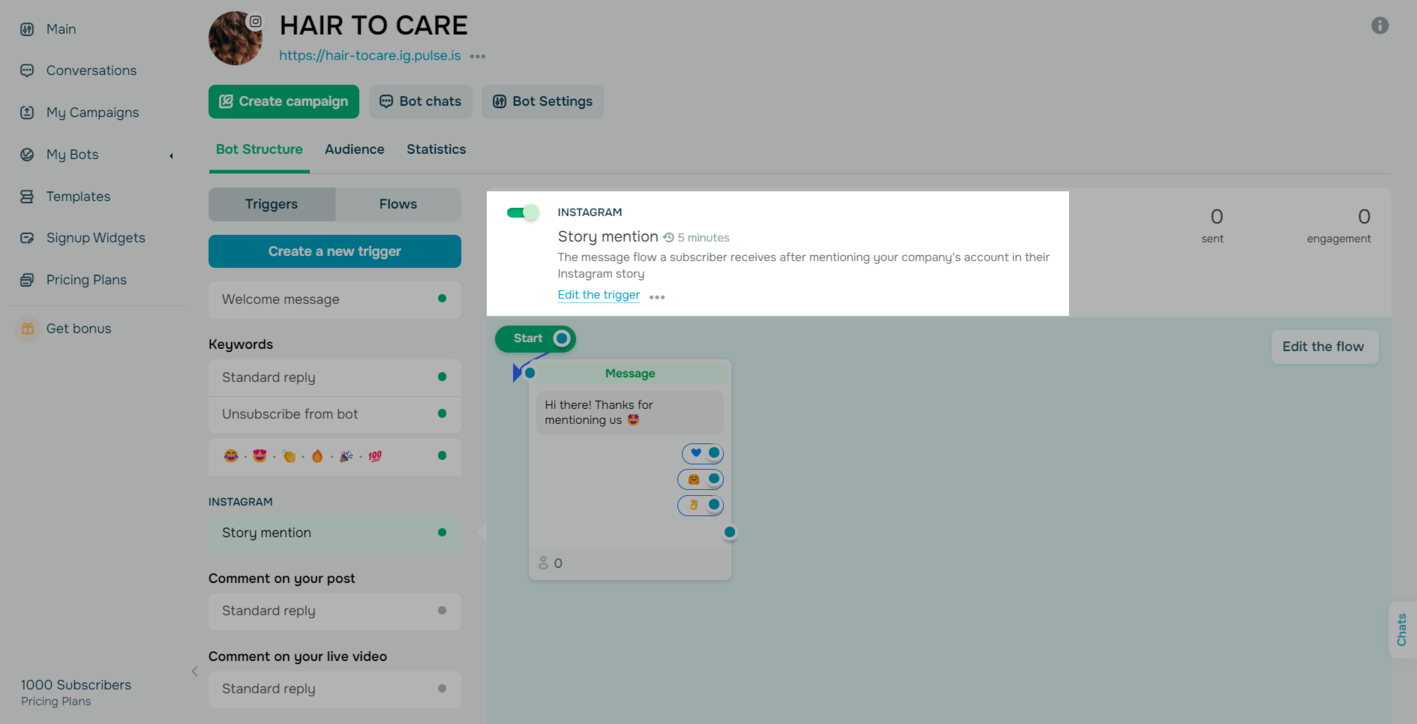 Setting up an auto-reply to people mentioning your account in their Stories
Setting up an auto-reply to people mentioning your account in their Stories
Embedded customer images
If you want to go one step further, consider adding UGC videos and photos to your website and product pages to showcase real-life usage. Instead of bland, static image galleries, you can feature lively TikTok videos demonstrating your products in action — this is the ultimate combination of social proof and testimonials.
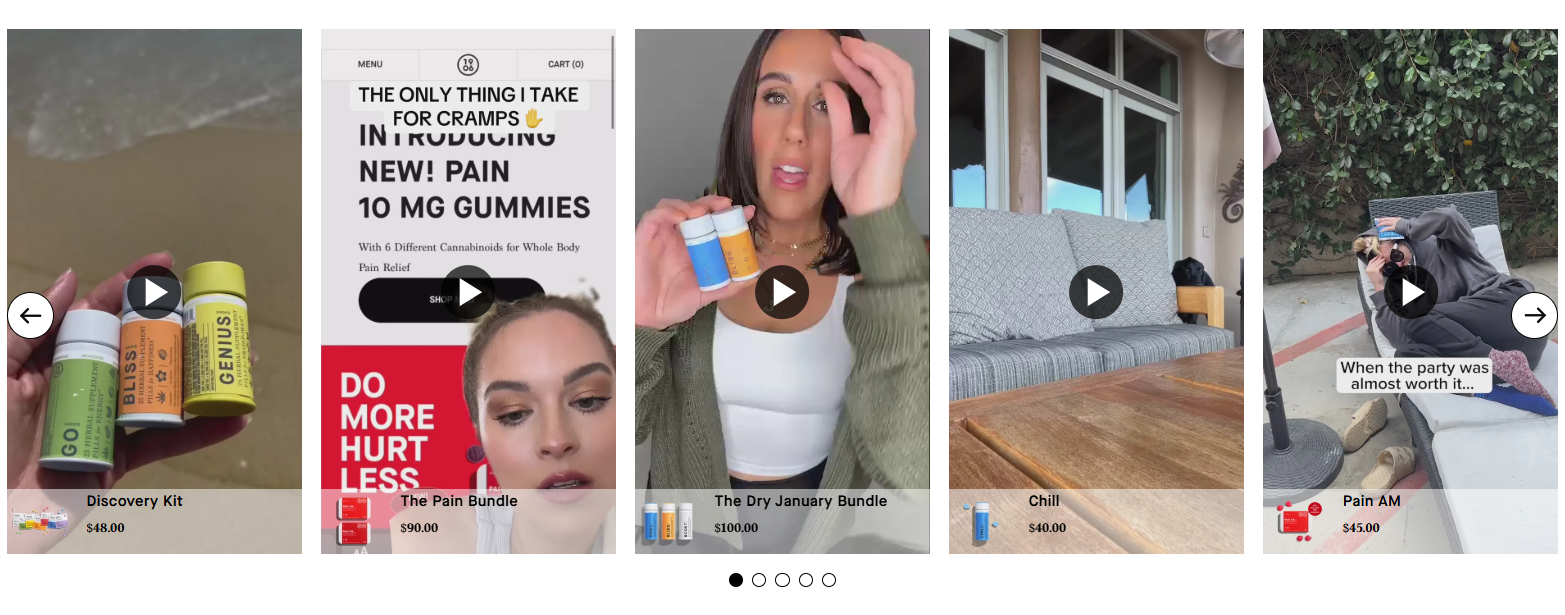 An embedded UGC video example on a company’s website
An embedded UGC video example on a company’s website
UGC videos, in particular, tend to do a fantastic job at capturing the benefits of the product in a conversational manner, without technical jargon or salesy fluff. The authenticity of such content often outweighs potentially imperfect editing or shooting conditions.
Social proof
Integrating UGC in the reviews section on your website is another way to show your customers some love and let their words speak for themselves when it comes to the quality of your products.
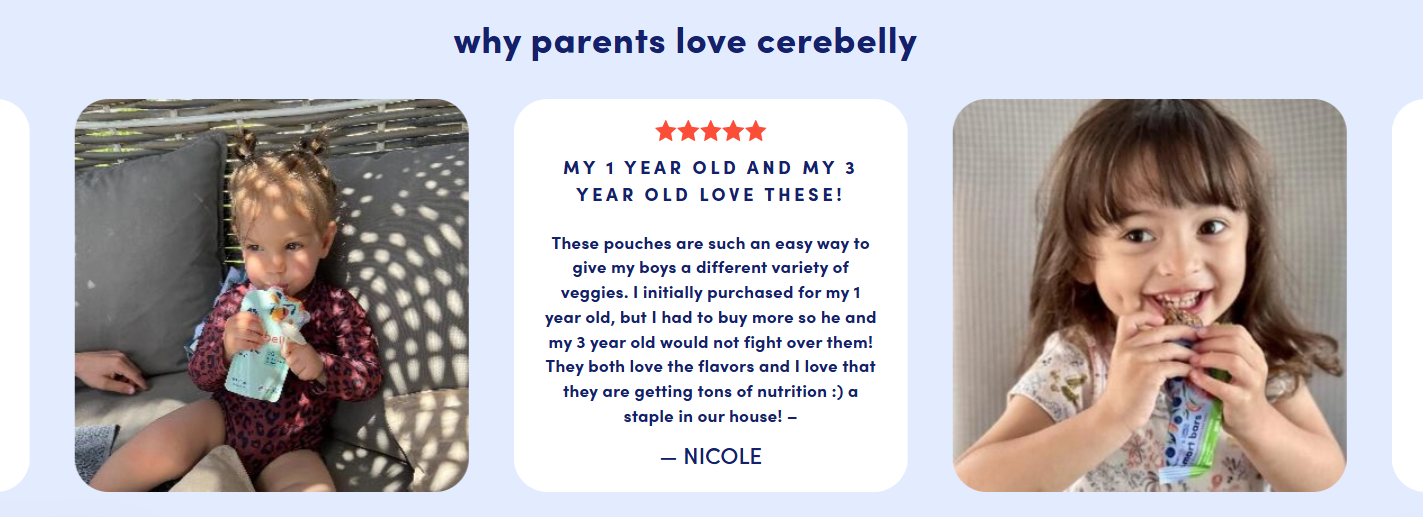 User-generated content examples to enhance customer reviews
User-generated content examples to enhance customer reviews
Raw, unpolished customer images can greatly enhance testimonials, making them more vivid and believable. Moreover, adding UGC images enables you to convey the exact emotions your brand brings into people’s lives, which may be hard to achieve any other way.
If you don’t have a website yet, consider using our page builder to create a sleek, modern-looking platform for your brand. Our code-free visual editor, customizable responsive templates, and built-in analytics tools allow you to create and manage your sites while keeping them on-brand effortlessly.
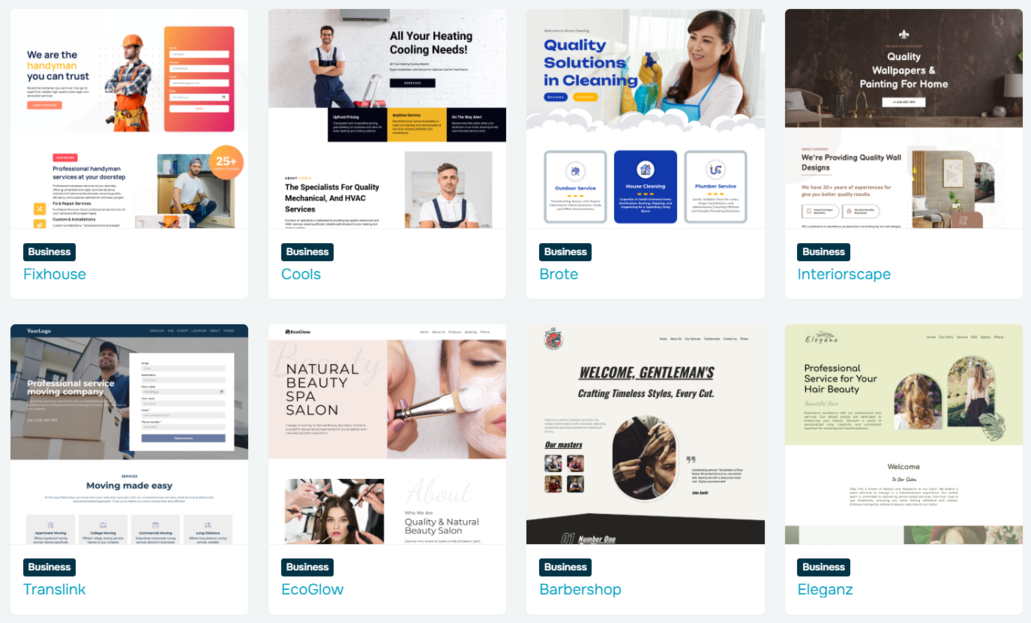 Website templates to choose from
Website templates to choose from
Email marketing campaigns
If you want to make your emails more impactful and memorable, introducing UGC content is the way to go, as it allows you to tie two loose ends at once — to highlight the benefits of your offer and to show its credibility. This approach works especially well for visual and experiential products and services where emotions matter more than the price.
As seen in this UGC email example, the imperfectly perfect user photos might be the missing piece required to hold a wanderlust-inducing newsletter together. You may also want to add customer-submitted images in abandoned cart emails to drive FOMO and encourage purchase completion. Community-driven content also pairs well with brand updates and special offer emails.
With SendPulse, you can create and send professional-looking email campaigns containing your best UGC images along with CTAs. The dynamic personalization feature ensures your email content always feels relevant to the end user, and the built-in automations are useful for getting your campaigns delivered at the right time. Thanks to our basic free plan, you can explore the capabilities of our platform without any risks.
 Creating an email template with SendPulse
Creating an email template with SendPulse
Digital ads and paid campaigns
Another great UGC use case is advertising campaigns on Facebook, Instagram, TikTok, and YouTube. Instead of using distant, impersonal studio shots, you can captivate your audience with natural-looking, relaxed, yet charismatic models who also happen to be your actual customers.
By incorporating genuine customer testimonials in carousel or video ads, you’ll make them more persuasive and worthy of consideration. In this example, an app for finding the best deals on groceries relies on UGC to make its ads go viral, and it works — the tactic brings in hundreds of thousands of impressions.
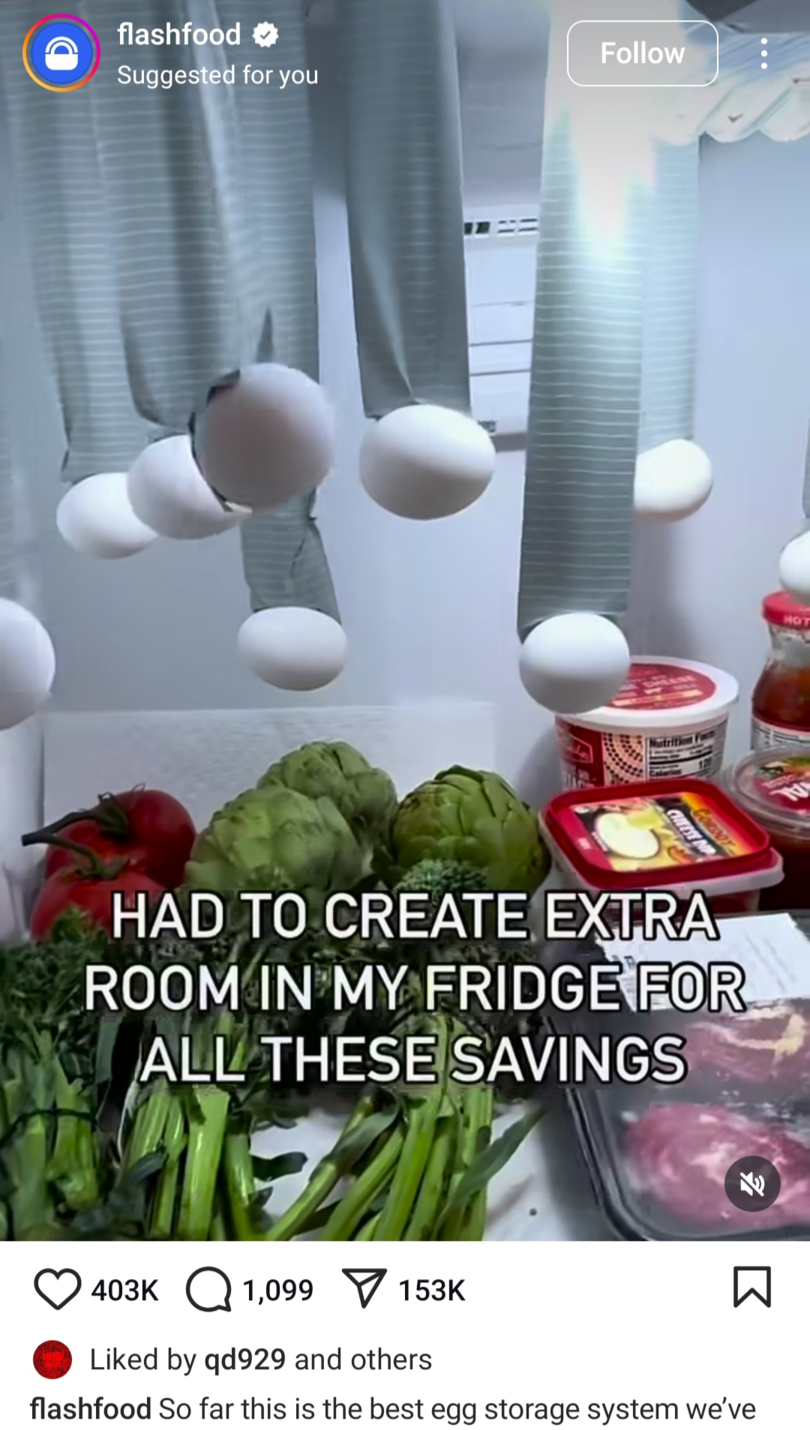 An example of using UGC in ads on social media
An example of using UGC in ads on social media
Using entertaining UGC images or videos for digital advertising is a win-win situation as you provide your audience with the exact type of content they’re looking for on Instagram or TikTok. Using fun and clever Reels instead of plain promotions guarantees you higher engagement and genuine comments along with better customer retention. Nevertheless, it’s recommended to A/B test UGC vs. traditional brand imagery to analyze performance improvements.
Product use tips and hacks
With the help of user-generated content, you can empower your customers to make the most out of your products or services. While your loyal audience may not know all the technical details, they do possess the crucial practical knowledge on how to wear or apply them daily and get the best results.
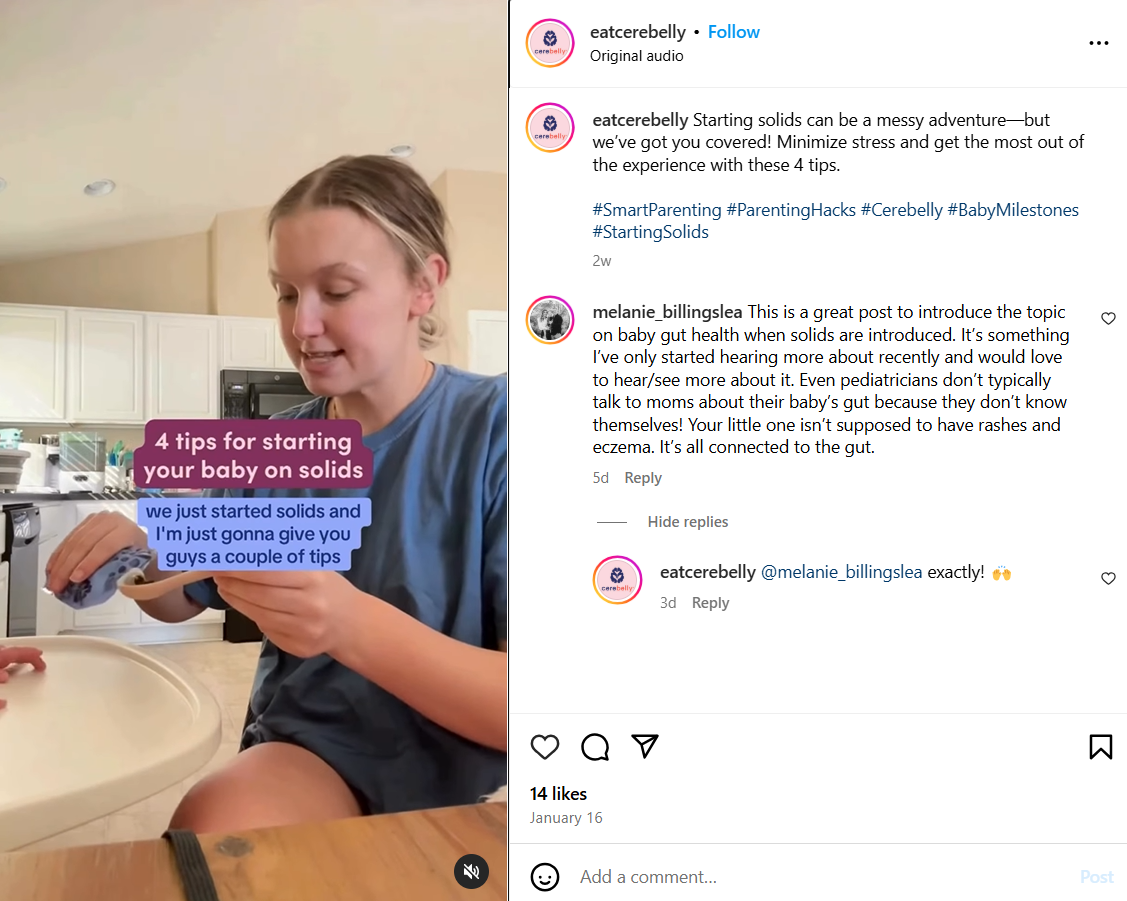 A UGC video example breaking down the topic of baby gut health
A UGC video example breaking down the topic of baby gut health
This type of niche expert content can do wonders when it comes to educating your new customers without being pushy. As the UGC posts come from different creators, the viewers get a chance to soak in different opinions and perspectives and develop a more holistic view of your brand.
Micro-influencer programs
If your available organic UGC content at the moment lacks depth, you can fill in that gap by collaborating with niche influencers who are already familiar with your brand or its alternatives and are likely to promote it in an authentic way.
A micro-influencer video discussing cosmetic product application
Relying on small-scale opinion leaders to share honest reviews and lifestyle integrations of your product will give your online presence yet another dimension.
In-depth tutorials, recipes, and how-tos
As your audience keeps discovering new layers of your brand and use cases for your products, they’ll become increasingly interested in expert-level product content showing them how to go beyond the familiar.
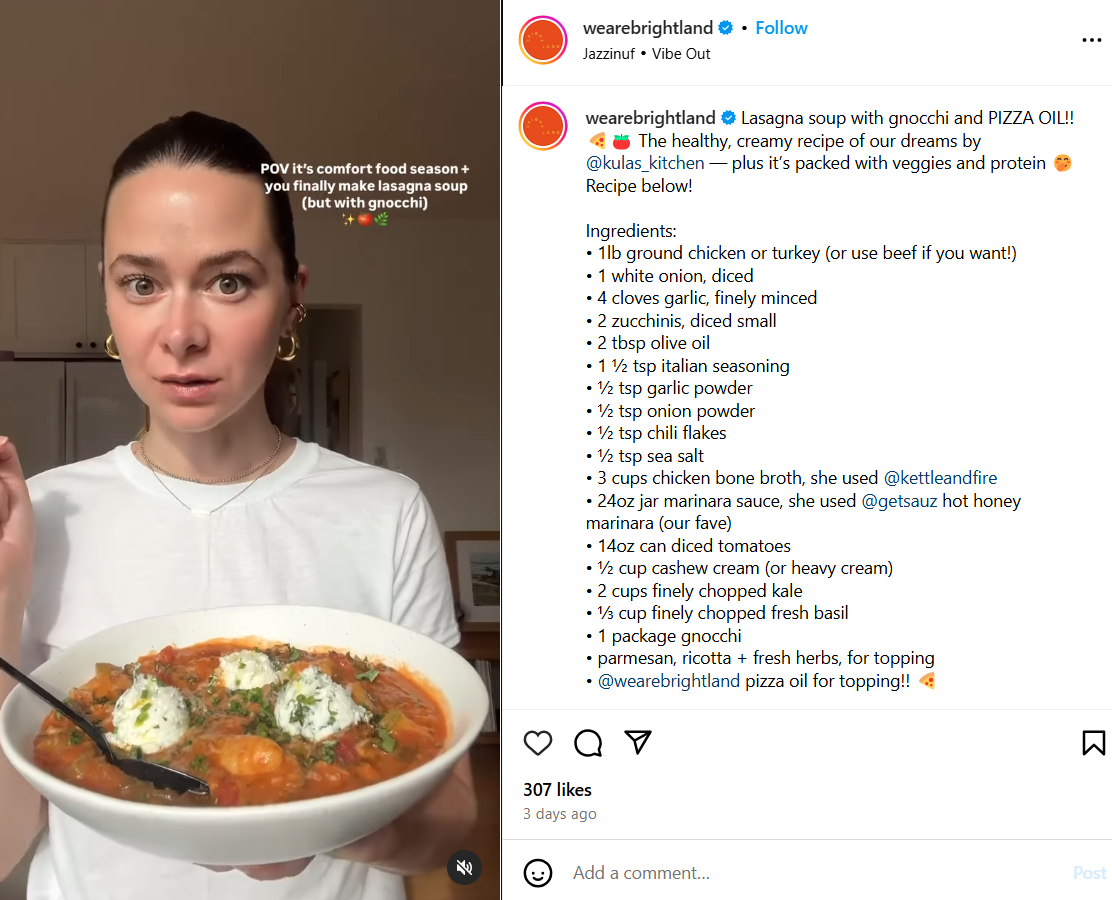 In-depth user-generated cooking content example
In-depth user-generated cooking content example
One way to create such content is by hiring an outside expert and filming it in a studio. Another way is to collaborate with your brand’s most loyal ambassadors who are already well-versed in your product universe and can film their work processes in their natural settings.
First-person UGC
Many businesses struggle to consistently discover fresh UGC examples that could be used on social media. If that’s your case, you may want to switch things up and get in front of the camera as your own brand ambassador.
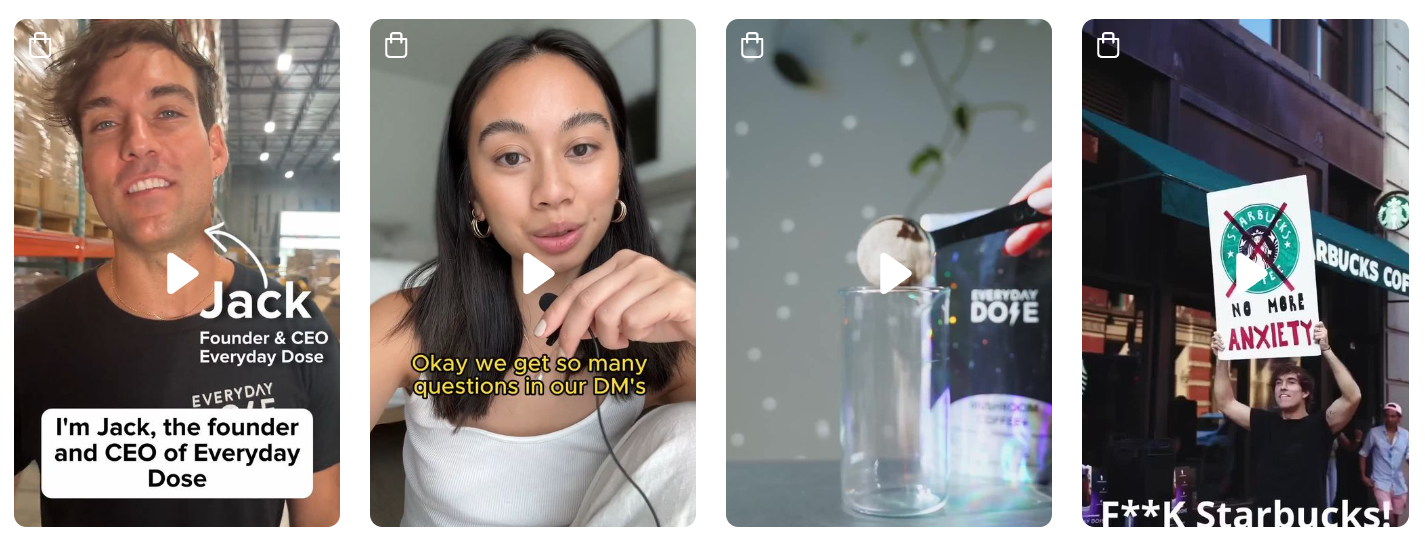 First-person UGC examples
First-person UGC examples
This is exactly what this mushroom coffee brand, Everyday Dose, does — it relies on organic, conversational lifestyle content from its founders to achieve that highly thought-after authenticity without sacrificing the quality or distorting the perception of the brand.
Styling inspiration
Customer-submitted content can provide not just raw knowledge but also inspiration. Think style guides, pairing ideas, or lookbooks — much of this content is usually being created by social media users for free.
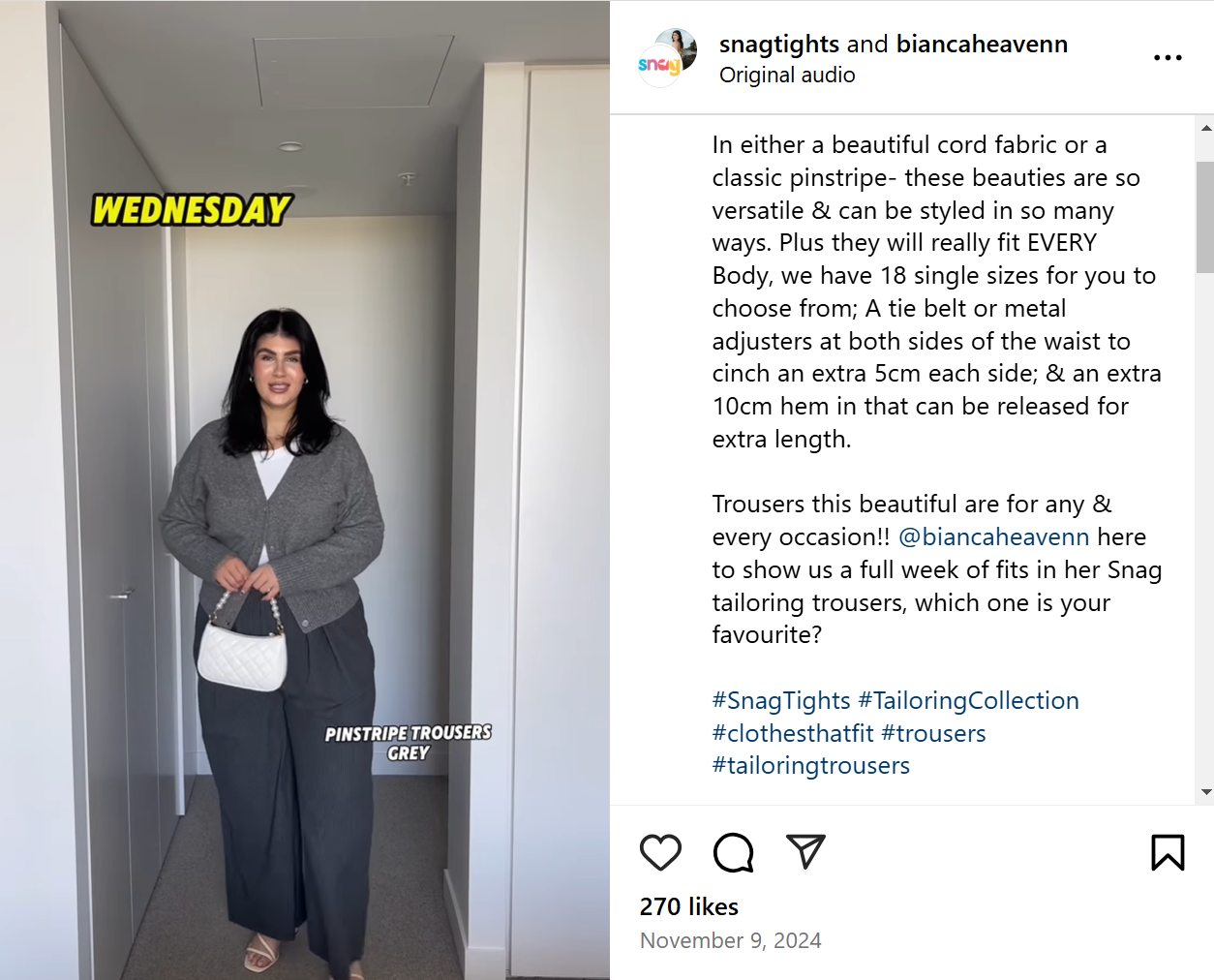 An example of a UGC Instagram post with styling ideas
An example of a UGC Instagram post with styling ideas
You can also proactively reach out to your biggest brand supporters and invite them to share their experience in exchange for a small reward. To enhance your UGC image and video posts even further, consider featuring customer stories or case studies to build emotional connections.
Commercial content submission
Speaking of incentivizing your users to share content featuring your brand, there’s a way to keep such content flowing in and make sure it follows your basic brand guidelines — this way is called content submission program. This can be as simple as a website page where you describe the requirements and name the reward.
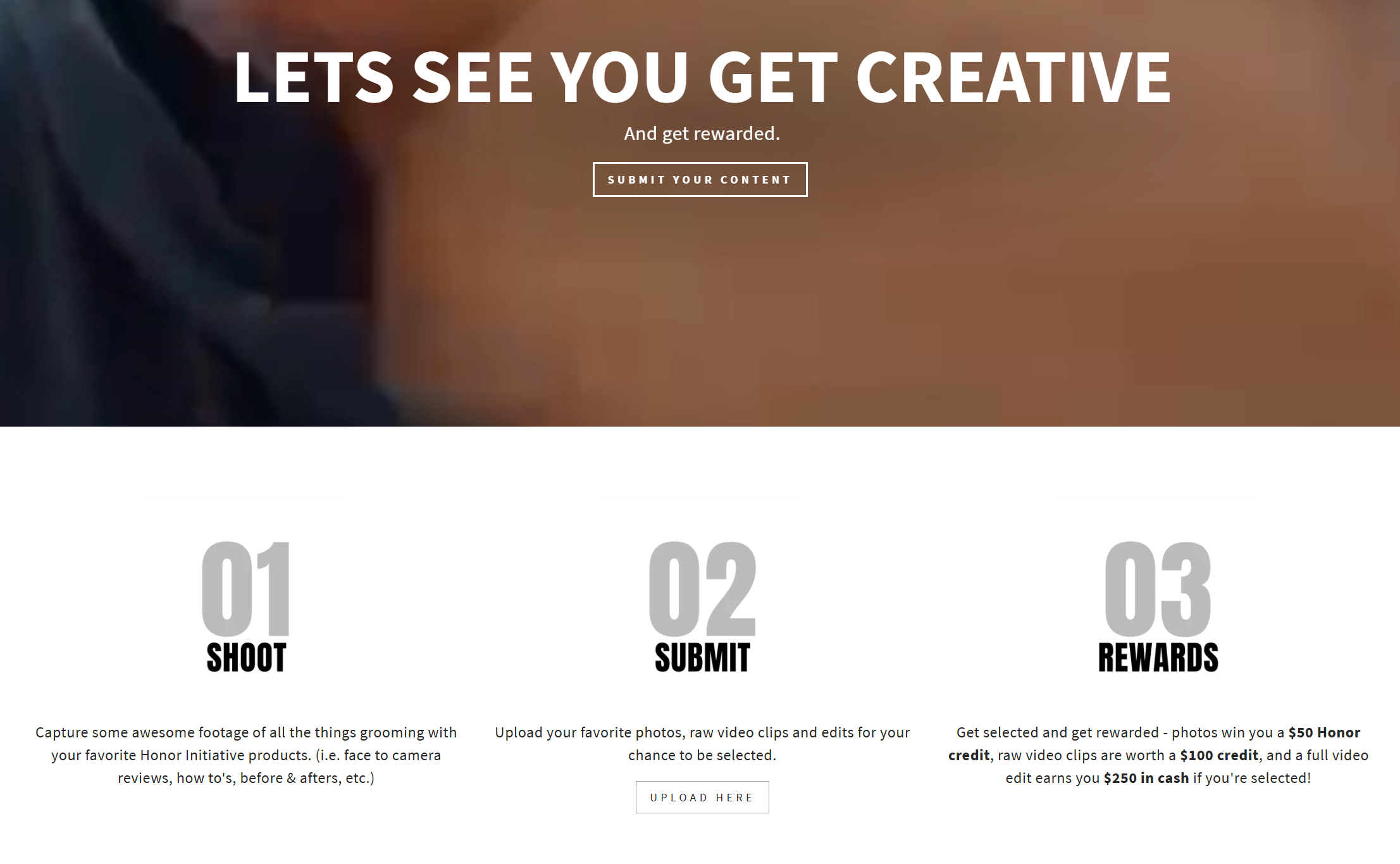 A user-generated content submission form example
A user-generated content submission form example
By rewarding top contributors, you keep the bar high and motivate users to put extra effort into their testimonials and reviews. However, it’s crucial that the submitted content captures authentic experiences and doesn’t turn into another paid promotion.
Live shopping and product launch content
Last but not least, it’s possible to integrate UGC into live shopping events on Instagram, TikTok, and YouTube. By featuring micro-influencers in product demo videos or unboxings, you are more likely to draw attention to them and create some hype.
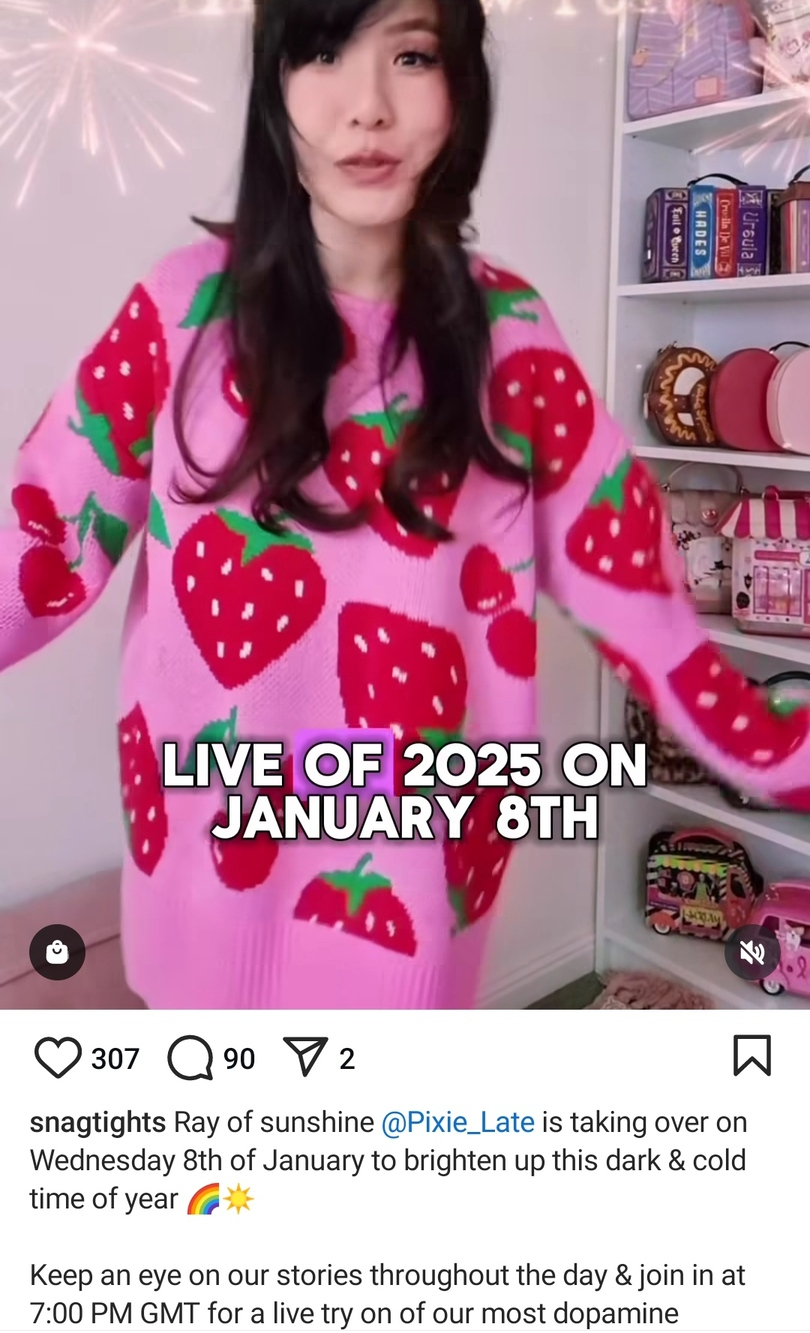 A micro-influencer promoting a live product launch event on Instagram
A micro-influencer promoting a live product launch event on Instagram
Alternatively, you can pick a few lucky customers, let them experience your new product ahead of the official launch, and then invite them to submit video reviews for a chance to be featured.
3 high-impact UGC campaign examples and the strategies behind them
We’ve seen how intentional UGC usage can brighten up your brand’s online presence, but what about long-term goals? Turns out, it can also be part of a bigger strategy, as these UGC content examples show.
Nivea
In December 2024, NIVEA India achieved a Guinness World Record for the largest online video chain of people passing and applying moisturizer, totaling 444 videos and surpassing the previous record of 259. This accomplishment was part of NIVEA’s annual UGC campaign, which saw a 30% increase in participation compared to the previous year.
The campaign invited participants to show off their skills by performing a trendy dance step from the NIVEA Soft anthem. To amplify its reach, NIVEA collaborated with over 80 influencers on the MOJ platform, inspiring widespread participation. The rewards for the fun challenge included a paid international trip and a sponsorship to encourage women to go after their dreams.
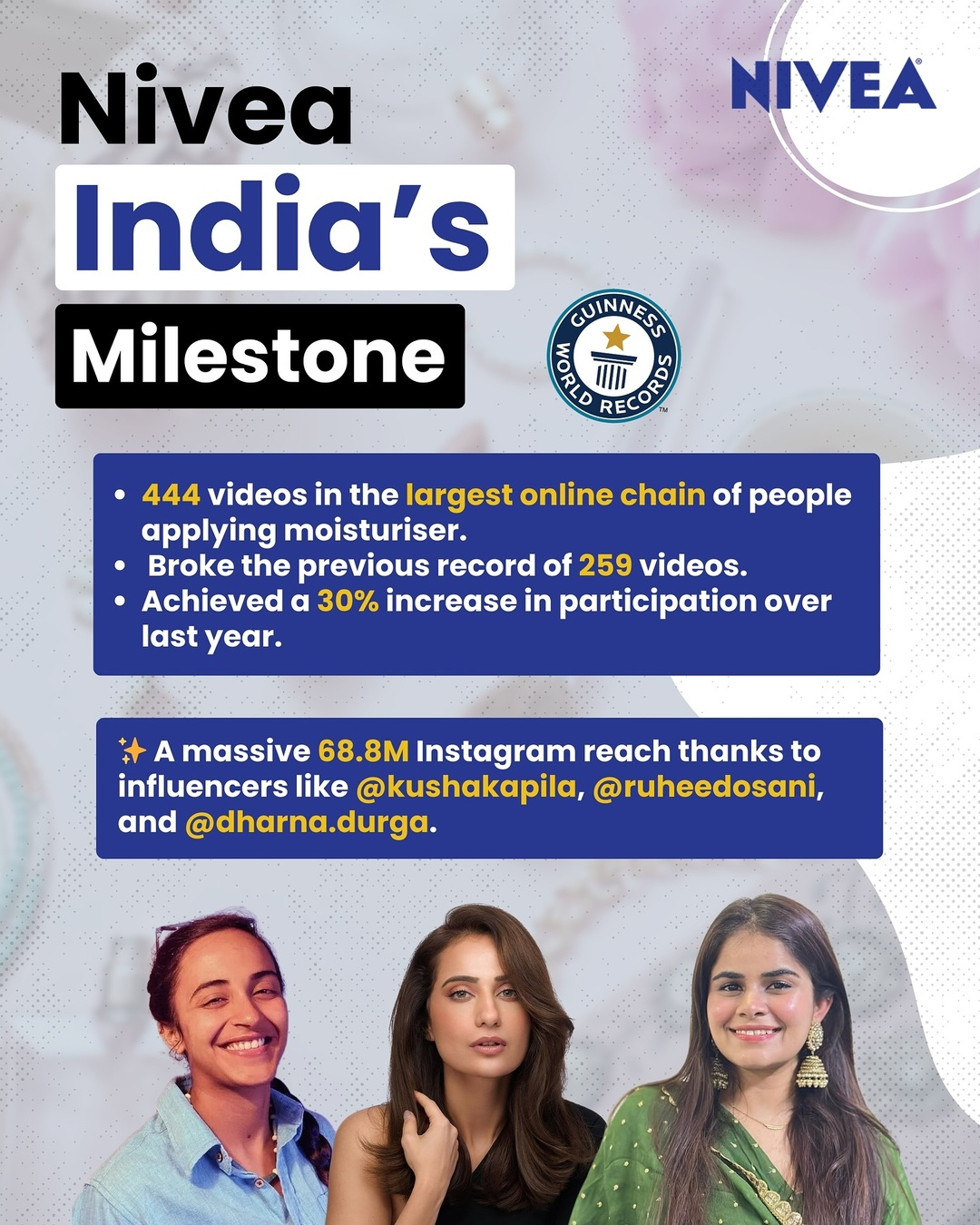 NIVEA’s “Pass the moisturizer” campaign’s aftermath; source: Threads
NIVEA’s “Pass the moisturizer” campaign’s aftermath; source: Threads
With the help of this seemingly playful challenge, NIVEA achieved some serious results, from increased brand engagement to a stronger sense of community among its users. Also, the brand once again demonstrated its commitment to female empowerment.
Earlier, NIVEA had also partnered with Foap, a content sourcing platform, to generate authentic assets that aligned with the brand’s global aesthetics while catering to niche markets. By launching over 100 creative “Missions” on Foap’s platform, NIVEA engaged over 68,000 visual content creators, resulting in nearly 244,000 UGC photos.
This approach enabled NIVEA to build a versatile content bank of ready-to-use visuals perfect for social media and marketing campaigns across various regions. This case serves as a textbook example of how brands can leverage UGC to maintain global consistency while also meaningfully connecting with their audience.
North Face
In January 2023, The North Face launched the “Out of Office” campaign, encouraging individuals to disconnect from work and immerse themselves in nature. The campaign invited participants to share creative “Out of Office” messages alongside photos of their outdoor adventures on Instagram, using the hashtag #TNFOutOfOffice, for a chance to win $1,000 worth of The North Face gear.
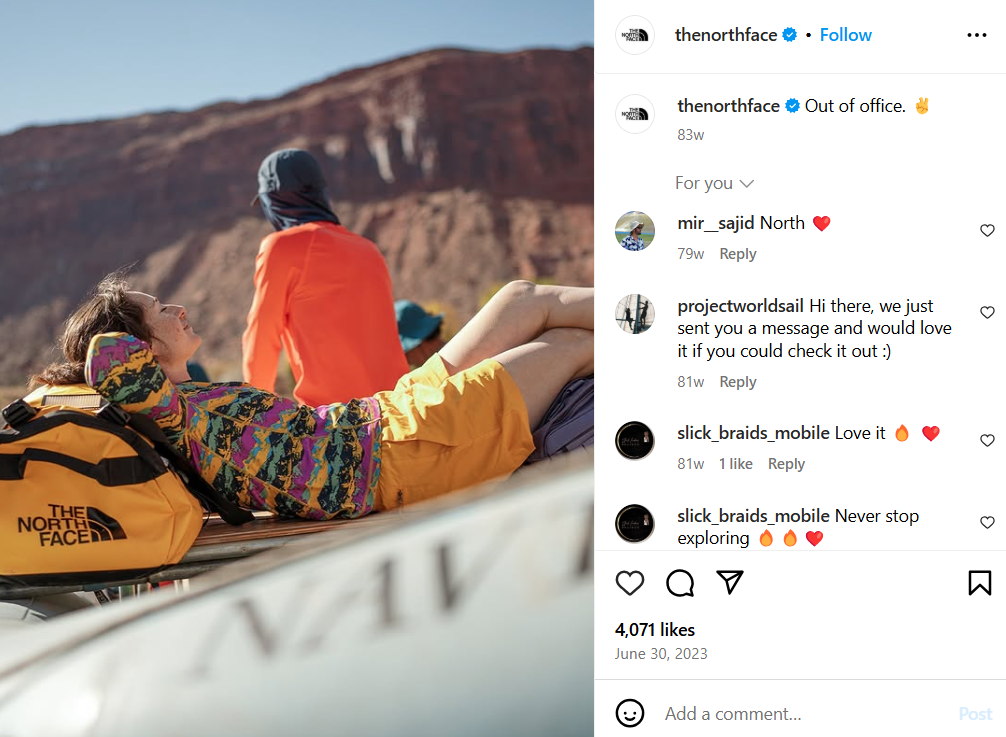 The North Face “Out of Office” campaign on Instagram
The North Face “Out of Office” campaign on Instagram
This initiative not only promoted a healthy work-life balance and digital detox but also created a wealth of user-generated content that showcased authentic customer experiences in the wild with the brand’s products.
With this campaign, The North Face stayed true to its identity while fostering community engagement, strengthening consumer trust, and driving sales — each featured UGC post was a perfect advertisement for the gear in real-world settings.
Crocs
In October 2023, Crocs celebrated “Croctober,” a month-long event honoring its passionate fanbase, Croc Nation. The brand introduced the highly anticipated Crocs Classic Cowboy Boot, a product inspired by fan requests, featuring western-inspired designs and unique charms.
Crocs also celebrated 95 “Croc Stars,” some of its most creative and bold fans worldwide, by sending them the boots ahead of the public release, which resulted in organic unboxing content and palpable anticipation. This is an unprecedented case of leveraging UGC at such scale — the campaign empowered customers to be the true co-creators of yet another iconic shoe.
 Crocs’ Cowboy Boot launch promotion
Crocs’ Cowboy Boot launch promotion
By actively involving fans in product development and marketing, Crocs achieved multiple goals, such as establishing authentic connections, acknowledging unique customer desires, and solidifying its quirky brand image.
In addition, Crocs collaborated with Social Native to engage Gen Z consumers through creative storytelling, helping the brand leap from the 27th best-selling footwear brand in the US in 2017 to the very top of the list. Just in one year, Crocs managed to run 15 UGC campaigns, working with more than 170 creators and generating 225 visual assets.
That’s a wrap
Hopefully, our user generated content examples gave you some food for thought and motivation to get started. Collecting UGC is a task that requires investing in long-term relationships with customers, and that’s impossible to achieve without proper communication tools. SendPulse can get you covered, providing you with chatbots, email automations, push notifications, pop-ups, and other tools needed for seamless marketing communications.
Create your free account now to see for yourself!